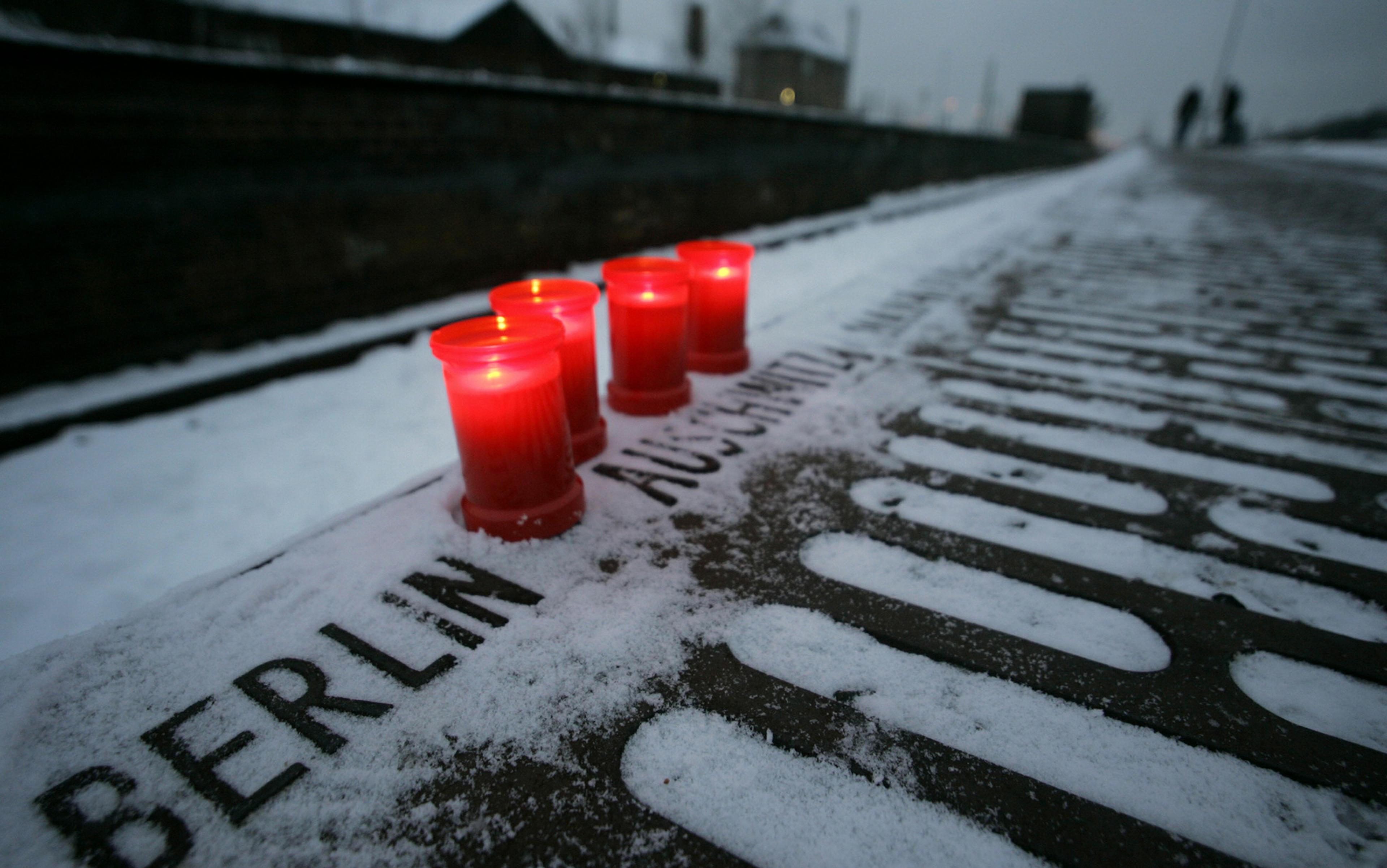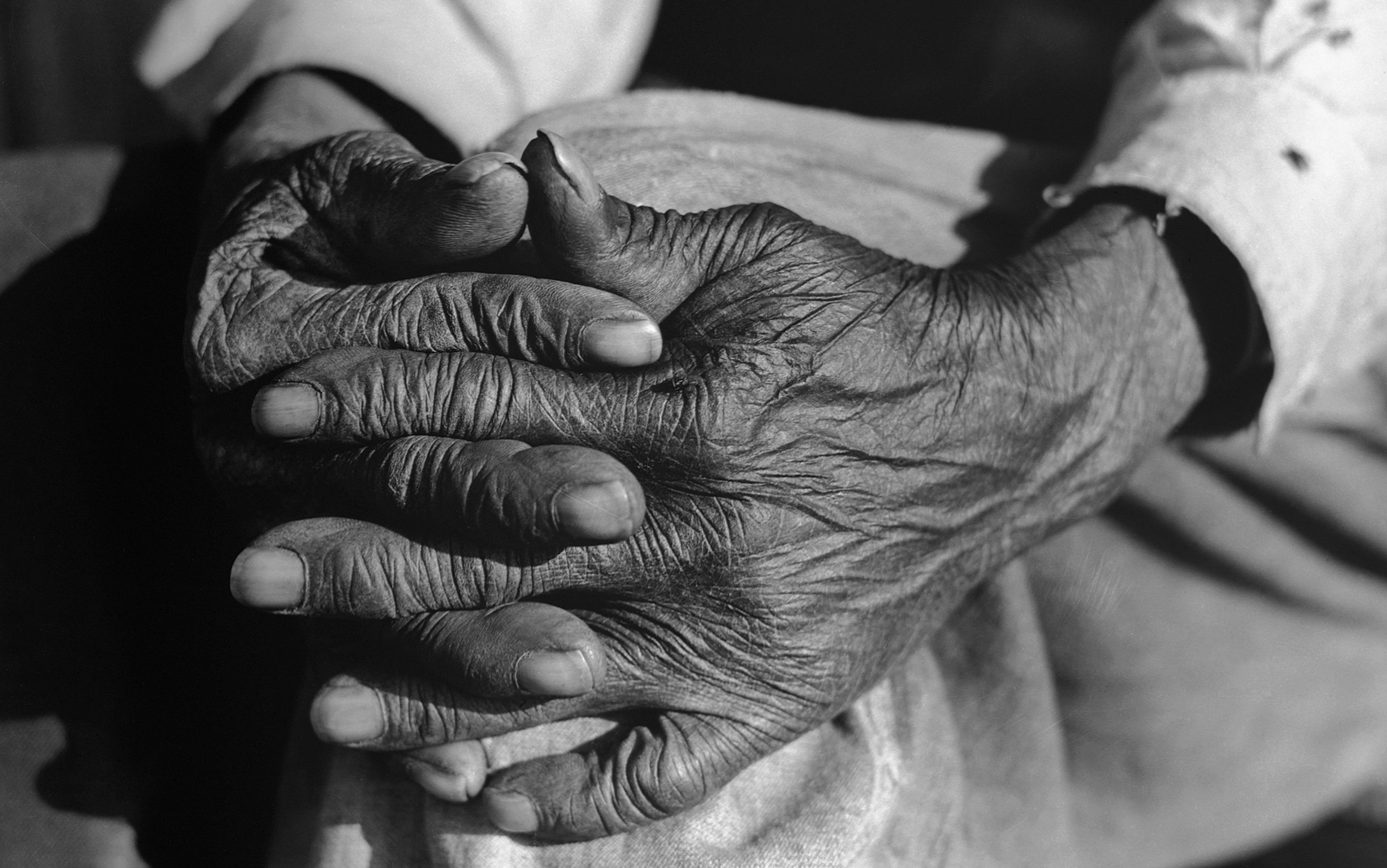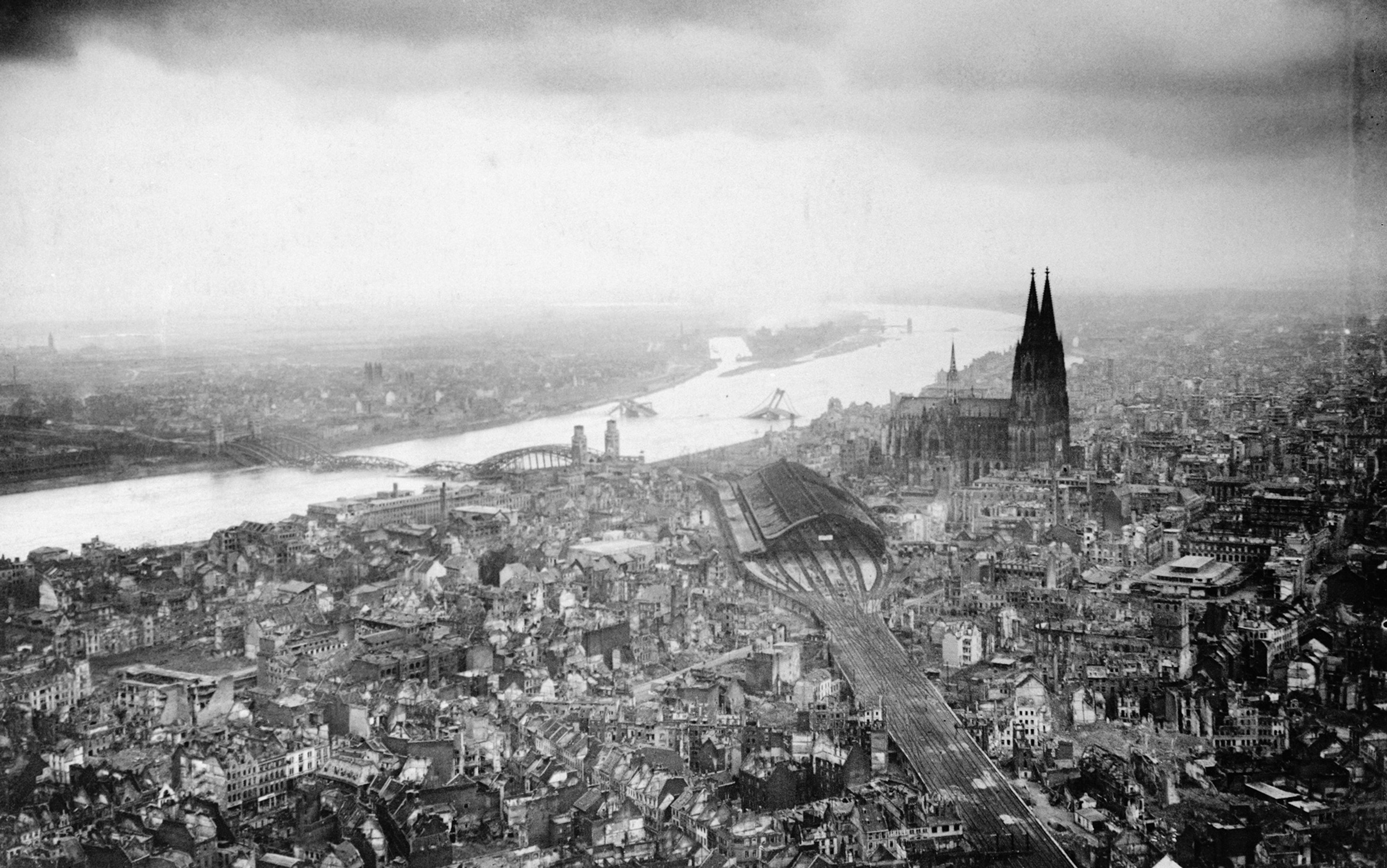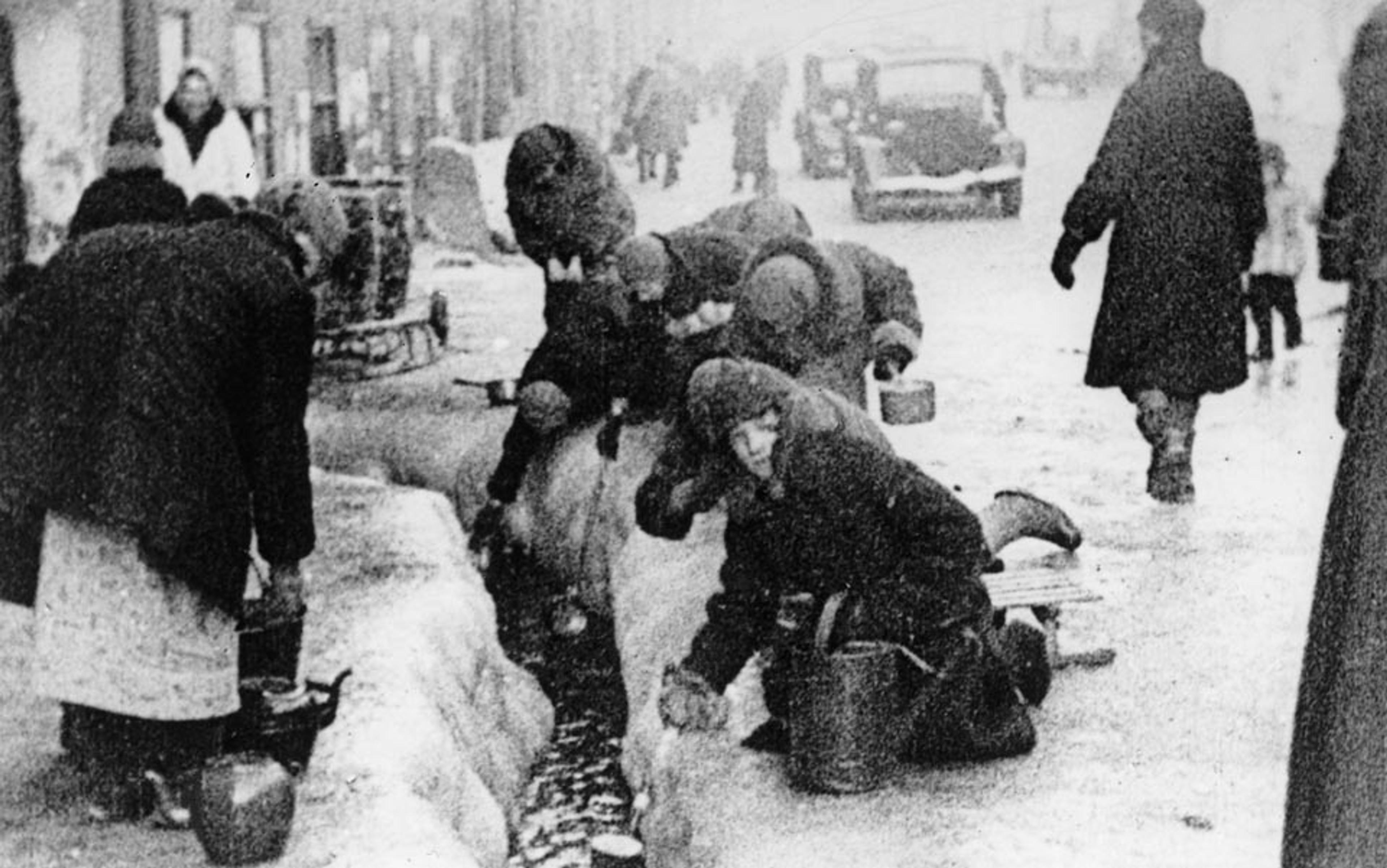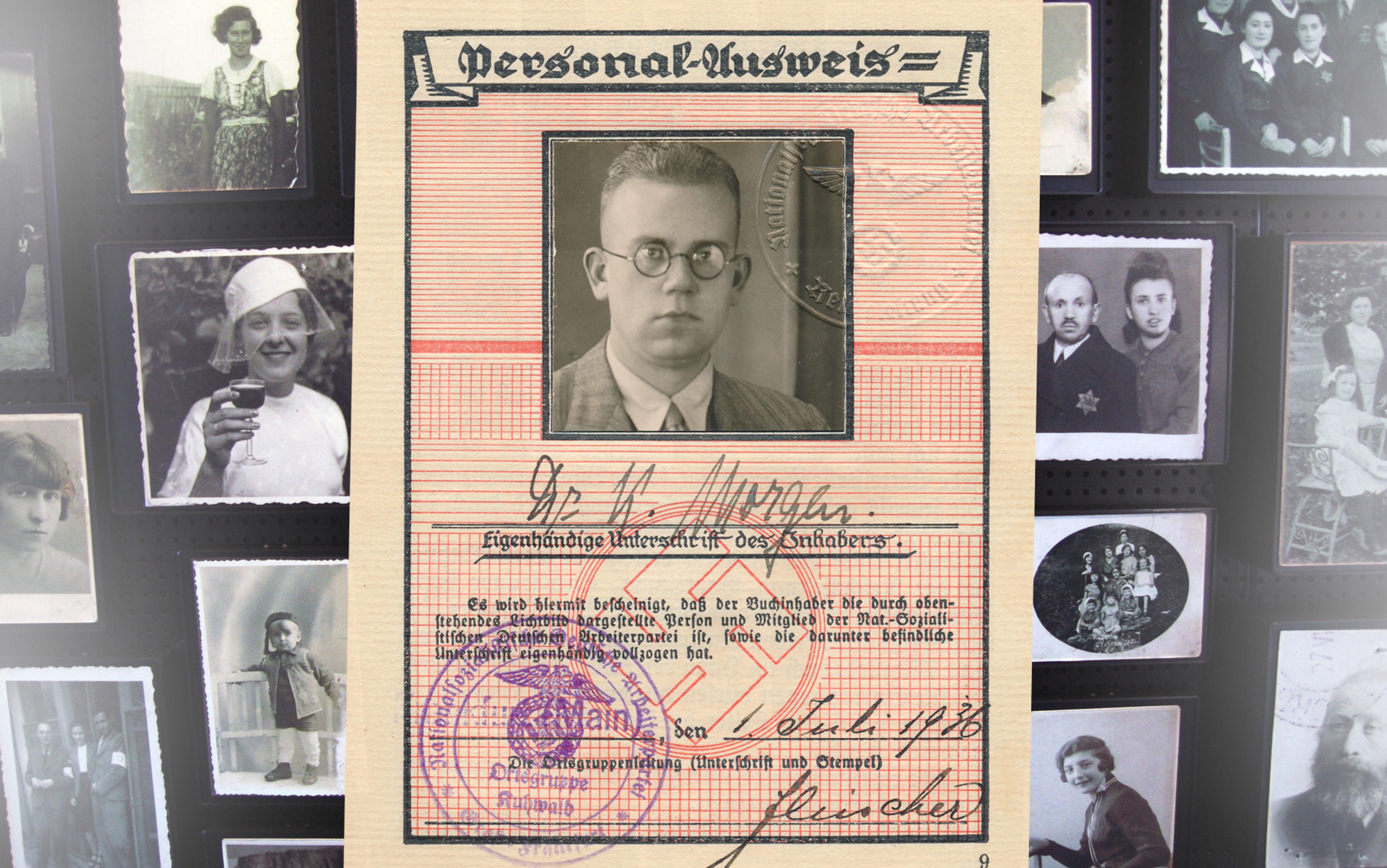On 8 May 1985, West Germany’s president Richard von Weizsäcker delivered something akin to the Gettysburg Address – not for a nation in the midst of war, as was the case for the United States’ president Abraham Lincoln in 1863, but for a country working through the memory and the meaning of a lost war 40 years after its end. There were, of course, vast differences in the two speeches. Given on a grey day on Cemetery Hill in the Pennsylvanian town for which the address is named, Lincoln’s speech to union soldiers lasted all of two minutes. Weizsäcker’s, by contrast, went on for three quarters of an hour, the German president weighing each syllable of each word and delivering them in measured tones to smartly dressed representatives of parliament in the then capital city of Bonn. The two speeches also contrasted in the way they invoked the past. Marking a battle that had transpired four months earlier, Lincoln did not utter the word ‘slavery’. Instead, he evocatively recalled a time – ‘fourscore and seven years ago’ – when ‘our fathers brought forth, on this continent, a new nation, conceived in liberty, and dedicated to the proposition that all men are created equal.’ Weizsäcker, somewhat in contrast, faced the Nazi past without flinching. He pleaded that 8 May 1945, the day of defeat, not be separated from 30 January 1933, the day Hitler had seized power.
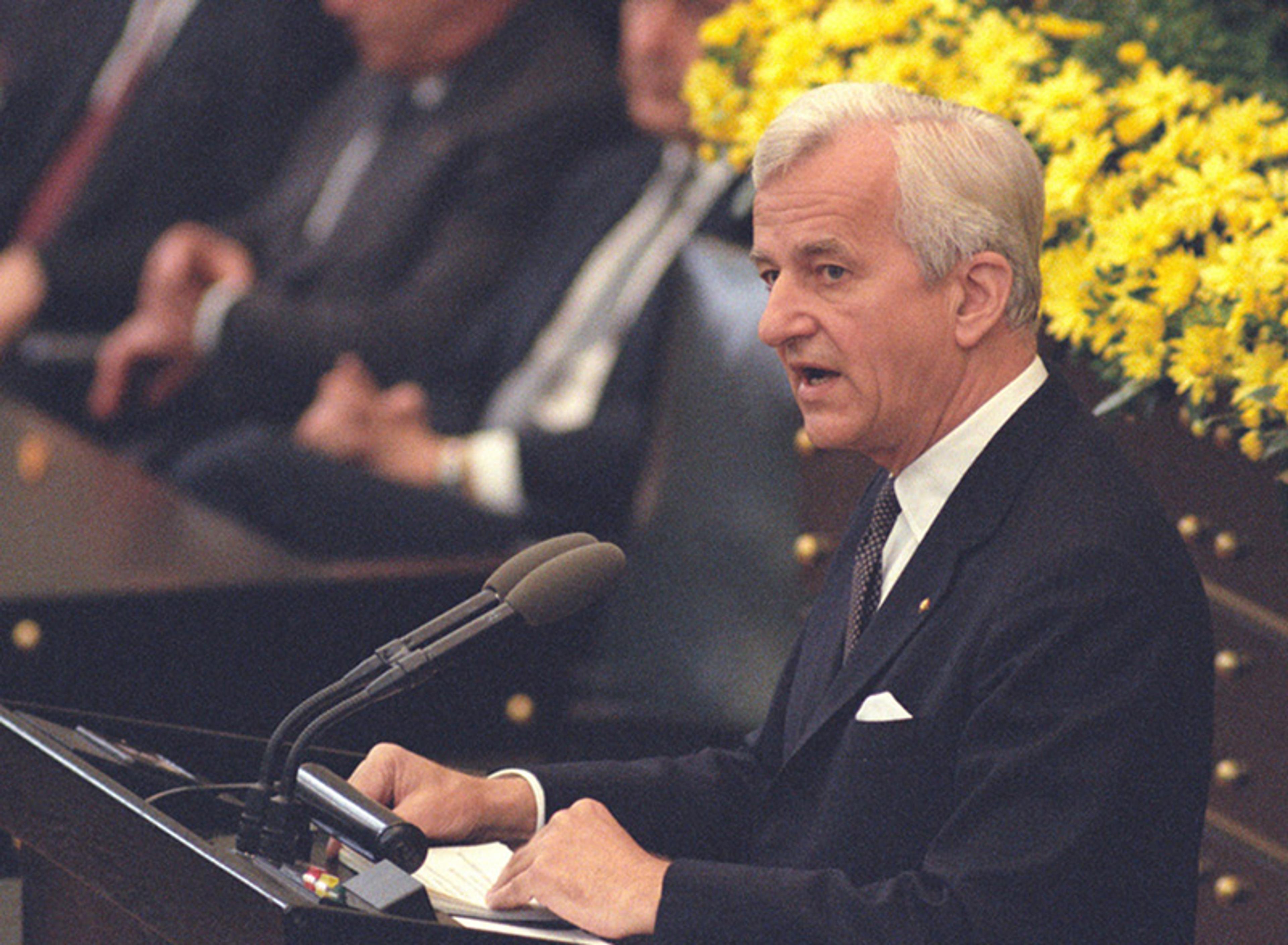
Germany’s former president Richard von Weizsäcker addresses the Bundestag on the 40th anniversary of the end of the Second World War, 8 May 1985. Photo courtesy BPA
Weizsäcker’s speech took place against the scandal caused by the US president Ronald Reagan’s visit, on the German chancellor Helmut Kohl’s behest, to Bitburg cemetery just days before. The cemetery contained the graves of US and German soldiers, and the visit was meant to be a symbolic act of reconciliation between two erstwhile enemies that had, in the course of four decades, become close allies and friends. But it was soon revealed that soldiers from the SS, the Nazi elite corps, were also buried in the cemetery, and the international public reacted swiftly. Elie Wiesel, a Holocaust survivor and Nobel Peace-prizewinning author of the memoir Night (1960), told Reagan: ‘That place, Mr President, is not your place. Your place is with the victims of the SS.’
Reagan and Kohl wanted to heal the wounds of the Second World War by drawing a Schlussstrich (a conclusion) to the seemingly endless discussion of the conflagration. Weizsäcker struck a more honest tone. He named the names of the groups who suffered. We remember and mourn all the dead of war and dictatorship, Weizsäcker intoned. He underscored especially the ‘6 million Jews’ killed in concentration camps, and singled out the citizens of the Soviet Union and Poland. Then, as he read through a scroll of agony, Weizsäcker mourned a third group, ‘our countrymen’, including the German soldiers who lost their lives, civilians who died in aerial attacks, and the many millions of expellees forced from their homes in eastern Europe after the war. Less expected, Weizsäcker also evoked the memory of the murdered Sinti and Roma people, the homosexuals killed, the mentally disabled whose lives the Nazis extinguished, and those they eradicated because of their religious or political conviction.
For some of these groups, in particular homosexuals and Sinti and Roma, no German leader had ever uttered their names in a public speech in the context of a national day of commemoration. Weizsäcker also recalled the heroism and sacrifice of German resisters, and not just those in the army, but also those in the trade unions and among the communists. Finally, Germany’s president introduced new ways of thinking about the fate of some 12 million Germans expelled from the east (mainly from Poland, the Czech Republic and the Soviet Union). In the first four decades of the existence of the Federal Republic of Germany, the claims of the so-called expellees for the right of return to their homeland severely divided political parties. Weizsäcker, who received repeated applause on this issue, reminded his listeners that the expellees had suffered and lost more than most Germans, and insisted that their Heimatliebe (love of home) was genuine, and not to be equated with revanchism. But he also pointed out that, 40 years after the end of the war, Polish graves had come to outnumber German graves in the cemeteries of the erstwhile German communities of eastern Europe.
Widely applauded, the speech did not go unopposed. The Bavarian politician Franz Josef Strauss grumbled that all this ‘endless mastering of the past in the form of ongoing national contrition paralyses a people.’ Nevertheless, ‘the speech’, as it was called, reached an immense audience. Published in newspapers and magazines, reprinted as a book, distributed gratis, the speech was also recorded on a 33 RPM record. In the summer of 1985, I was a recent college graduate living in a small town in Germany and working in a local factory. After hearing that speech, a conservative neighbour took me aside. ‘Weizsäcker spoke from our hearts,’ she whispered to me. To her, what he had said was not about party politics. It was about the truth of things. Weizsäcker’s speech created an opening – a chance to speak truth.
In the mid-1980s, when Weizsäcker gave his speech, a tectonic shift was already reshaping the historiographical landscape, as German historians were slowly finding their way to more complex truths about Nazi Germany and the Holocaust. True, tremors had been felt earlier. Since the late 1960s, two opposing schools of interpreting the Third Reich were at constant loggerheads. One would be called the intentionalists, the other the structuralists (or functionalists). The intentionalists underscored the centrality of Hitler and his ideology to the unfolding of events during the Third Reich. Hitler was not merely one element of a larger system, he was the motor and drive-train. The structuralists, by contrast, depicted the Third Reich as riveted by antagonisms. Competition between party and state, dictator and bureaucracy, the Gestapo and the forces of order tore at the very fabric of Nazi society. As chaos reigned, and power centres shifted, the Third Reich resembled a cut-throat corporation without an organisational flow chart.
The intentionalists and the structuralists set out very different understandings of how the Third Reich worked. The ensuing debate between the two interpretive camps was as bitter as any in the old Federal Republic. Partly, the rancour derived from differences in method, with the intentionalists favouring a biographical approach, and the structuralists a wider social one. Partly, the divisiveness drew from the acrimonies of party politics: the intentionalists shaded to the conservative side of the political spectrum, while the structuralists tended to the Left. At issue too was whether one side was in some way apologetic for the Third Reich. Placing all the blame on Hitler let German society off the hook, the structuralists contended. Putting responsibility on sub-units, such as the SS, diminished the culpability of the Führer and downplayed the centrality of his racist visions, the intentionalists countered.
German historians of the Third Reich remained mired in this debate, focused almost exclusively on Germans as perpetrators, throughout the 1970s and into the ’80s. As a result, there was little progress made towards a more expansive, integrated history of the Holocaust – one that took account of the experiences of its victims. But by the early 1980s, this too was beginning to change. In his recent memoir Where Memory Leads (2016), the historian Saul Friedländer refers to an international conference on the Holocaust that took place in Stuttgart in 1984 as ‘the first ever held in Germany on this theme’. At the conference, central interpretive issues between ‘intentionalists’ and ‘functionalists’ were aired. The question of resistance in a system that made virtually no space for it was also discussed. So too was the style of analysis. The Munich historian and leading structuralist Martin Broszat already saw a kind of ‘“Israeli” perception of this history, in contrast to a “German” one’, with the role of abstraction in describing mass murder the central point of contention. Finally, participants discussed the role of the Wehrmacht (the combined forces of Nazi Germany) in the genocide – a topic that would soon emerge with a vengeance.
The two men called a taxi. The other Berlin guests stayed
But as some historians began to pry open new insights, others tried to batten down the hatches. Normalising the past – seeing National Socialism as just one of the many chapters of Germany’s complicated history – was one strategy. Intended was a more positive history, history with a lighter skip. ‘No people can in the long run live without historical identity,’ cautioned the historian Michael Stürmer, advisor to Kohl. Another strategy was simply spurious. It came from the pen of Ernst Nolte, a philosopher who had studied with Martin Heidegger and had written important but not uncontroversial works on fascism. As the tide of opinion about the Holocaust shifted, Nolte turned more and more to mendacious forms of metahistorical speculation, arguing, as early as 1980 (and later translated and published in English) that, while the Holocaust was not to be defended or relativised, it was becoming a topic in which ‘only the voice of the victims was audible’.
To understand where Nolte was heading, Friedländer’s autobiography is again suggestive. In it, the prominent historian of the Holocaust recounts that, in the spring of 1985, Nolte had invited a group of guests to his house, including Friedländer and the Prague-born scholar of European literature, Peter Demetz. In the course of the evening, Nolte began to badger Friedländer. ‘What is it actually to be a Jew,’ Nolte asked, adding: ‘Herr Friedländer, you cannot deny that there is something like world Jewry?’ According to Friedländer’s account, Nolte also pointed out that since ‘World Jewry’ was at war with Germany, ‘Hitler could consider the Jews as enemies and intern them in concentration camps as prisoners of war, as the Americans did with the Japanese.’ At some point in this questioning, Friedländer got up. Demetz, whose mother the Nazis had murdered, did as well. The two men called a taxi. The other Berlin guests stayed.
While the professional historians slipped into acrimony, public historians were already writing in a new key. They were aided by a series of crucial 50th and 40th anniversaries (of the events of 1933, 1938, 1944 and 1945) that set a thousand pens in motion. Local, regional and national historians, many journalists, priests and pastors, and even politicians put their mind to and wrote about Germany’s difficult past. President Weizsäcker’s speech was only the most prominent and profound among these many efforts.
The preponderance of the activity in the early 1980s was local. In schools and communities, research soared, as ordinary people, on the Left and to some extent on the Right, got to work. With remarkable élan, teachers, housewives, archivists, retirees, preservation enthusiasts and students researched what happened in their neighbourhoods, affixed plaques to destroyed and desecrated synagogues in their home towns, restored local cemeteries (often with the help of Jews who could read the Hebrew inscriptions on the stones), and figured out the places where Jewish people were deported from and where the barracks of nearby concentration subcamps were located. They also established an enormous network of contacts.
In many communities, Germans wrote letters to Jews who were forced to emigrate or had lost kin in the Holocaust. They wrote to get their stories. They wrote to help identify other Jews from the city, town or neighbourhood. And they wrote to invite them back. In the larger cities, and in a surprising number of smaller ones, communities invited Jewish people to return for a ‘visitor week’, with the communities typically paying for travel and lodging. People talked, held speeches, wrote articles, even books. Some local historians wrote about nefarious hometown Nazis – as was the case in Passau, where the teenager Anna Rosmus (aka the ‘Nasty Girl’) accessed municipal archives for a school essay competition in 1980, and exposed a web of complicity and cover-up. Other historians worked out the fate that befell local Jews, ‘members of our community’ (Mitbürger), as many Germans began to call them.
If the groundswell of local, often amateur, historical writing was the framework for Weizsäcker’s speech, it was also the context for one of the most rancorous historical debates of the old Federal Republic: the so-called Historikerstreit – or the historians’ debate (in its lacklustre English translation) – that lit up the pages of Germany’s newspapers. Many historians wrote about it. Books were published, and history seminars discussed the competing and usually warring positions. It seemed like the great parting of the historiographical waters. The truth was more complex.
The Historikerstreit was touched off by Nolte in the summer of 1986 with an article in the venerable centre-Right daily, the Frankfurter Allgemeine Zeitung, and the reply from the philosopher Jürgen Habermas in the equally esteemed weekly Die Zeit. Nolte argued that Stalin’s crimes were anterior to Hitler’s, from which it followed that the Holocaust was derivative, and by no means unique or singular. He also claimed that Germany’s dark past had assumed the qualities of a myth, echoing his earlier contention that now ‘only the voice of the victims was audible’. In his reply to Nolte, Habermas made short shrift of Nolte’s historical speculations.
Yet even as Habermas conceded that Nolte was ‘carved from a different wood’, he nevertheless brushed historians on the conservative side of the spectrum with the tar of Nolte’s manifest absurdities, and so further solidified hardened battlelines within the historical profession. His boyhood friend, the prominent Left-liberal historian Hans-Ulrich Wehler, helped him do so. No doubt, some of the conservative historians had questionable political positions. Yet in their historical writing, many had made crucial contributions to the understanding of the Third Reich, as was certainly the case with Andreas Hillgruber, a participant in the 1984 Stuttgart conference and the author of an essential work on Hitler’s plans for continental domination, a work that emphasised the pervasive racism that saturated Hitler’s strategic thinking.
Habermas did not criticise Hillgruber’s larger contribution but rather his recently published short book, Zweierlei Untergang (1986) or ‘Two Kinds of Downfall’. The book consisted of two essays, one about the collapse of the Wehrmacht, the other a slightly reworked version of the paper he’d given at the Stuttgart conference, on the historical context of the destruction of the Jews. The publisher, Wolf Jobst Siedler, urged Hillgruber to combine the essays, which the Cologne historian agreed to do. The issue of identification was thus put in sharp relief.
How could a German historian side with the German army knowing what he did about the Holocaust?
Hillgruber asked with whom should a German historian identify when considering the eastern front in the winter of 1944/5? Should he identify with the German army desperately holding back the onslaught of Soviet forces, or with the remaining Jews, whose lives depended on the quick end of the war? Identification could not be with Hitler, who by that time had given up on the German people as unworthy, Hillgruber asserted, but nor could it be with the eventual victors (as that meant the Red Army), or with the Jews (the only group for whom the term ‘liberation’ made sense). Instead, according to Hillgruber, ‘the historian … must identify with the concrete fate of the German population in the east and with the desperate efforts, full of casualties, of the German eastern army …’ Most Germans would answer Hillgruber’s question differently now, and many would have answered it differently back then as well.
But the mid-1980s were another time. In the area around the small, southern German town where I had lived, there were lots of indoor and outdoor pools, and the indoor ones especially were full of older men who had lost limbs in the war or had plainly evident wounds. This was the Germany that Hillgruber knew. He belonged to an age cohort that lost nearly a third of their male schoolmates, not to mention that part of Germany – East Prussia – he had called home. For him, and his generation, questions of identification with the ordinary soldiers of the German army and with the plight of the refugees got at the core of his identity. It also called up the hush surrounding the rape of German women, which reminded of the definitive defeat of German men.
Still, how could a German historian, 40 years after the war, side with the German army knowing what he did about the Holocaust? There is no easy answer to this question. But a generous response might see the value in Hillgruber’s sharp-eyed sense of the changing landscape of identification. Until the mid-1980s, most Germans had seen themselves as victims of the Second World War. Many had lost brothers, sisters, sons, daughters, friends and classmates. But when a generation born after the war came of age, more and more Germans came to grasp the enormity of Nazi crimes against others, especially Jews. Hillgruber did not cross the Rubicon into a land with a more complicated mix of identification. But he felt the pull of these profound changes. He also addressed them.
These profound changes framed both Weizsäcker’s speech and the Historikerstreit. To be sure, those changes had been going on since the late 1970s, when a number of global processes and German-centred events began to converge. Globally, the breakthrough of human rights discourse, enshrined in the Helsinki Accords of 1975, had the effect of undermining nation-based appeals to rights. It was also the case that a number of countries witnessed the perceptible decline of nationalist (but not nation-centred) historical writing; in West Germany, the so-called Bielefeld School, of which Wehler was the most prominent exponent, was an expression of this wider trend. In 1979, the US television series Holocaust (1978) aired in West Germany and some 20 million Germans saw some part of it. Soon after, West Germany sponsored a major, nationwide essay contest in which some 13,000 students were chosen to write on the topic of ‘Everyday Life in National Socialism’.
If Widerstand was an activity of the heroic few, Resistenz was the everyday work of many
These events unleased a rush of commemorative projects. By making ordinary people into a legitimate field of investigation, professional historians even played a crucial role in shaping them. In the late 1970s, a number of initiatives for the history of everyday life were already in full swing. One group was based in the Ruhr, another in Göttingen, a third in Bavaria.
The so-called ‘Bavaria Project’, for example, pursued the grey zone between a persecuting and a broadly resisting society. Under the directorship of the structuralist historian Broszat, the project parsed one definition of resistance (Widerstand), evoking the conspiratorial resistance of the plot against Hitler of 20 July 1944, from another (Resistenz), which suggested the way that a body fights off a virus. If Widerstand was an activity of the heroic few, Resistenz was the everyday work of many. By stressing broad-based forms of anti-Nazi activity, Broszat hoped readers would identify with ordinary Germans engaged in Resistenz. But, like Hillgruber, he too stopped short of stepping across the breach, and arguing for identifications, and acts of understanding, that centred on the perspective of the victims.
Habermas did not point this out. But Friedländer – one of the historians who’d walked out on Nolte – did. In an exchange of letters that historians often think of as the lasting contribution of the Historikerstreit, Friedländer criticised Broszat’s ‘historicisation’, its focus on everyday Resistenz, for losing sight of the criminal nature of the regime. Broszat countered that history ‘from the perspective of the victims of National Socialist persecution’ was ‘understandable’, but ‘formulated in absolute terms … it would serve to block important avenues of access to historical knowledge, and would also hardly satisfy the demands of historical justice.’ Instead, it created a ‘mythical memory’, a German history from the perspective of the victims and their descendants. This criticism implied that both sides, Right and Left, remained enmeshed in structurally similar problems of historical identification, and that these had already inhered in the split between the intentionalists and the structuralists. The more conservative intentionalists focused on Hitler’s crimes while de-emphasising German society. The more Left-leaning structuralists focused on everyday life in Nazi Germany only to downplay its criminal dimension.
Where, then, did this leave Germany’s truthful engagement with its past? Both Lincoln and Weizsäcker, it might be recalled, turned their nation’s eyes to the future. Talking to the soldiers at Gettysburg a mere four months after the fateful battle, Lincoln memorably pledged his countrymen to do ‘the unfinished work’ for which the fighting men ‘gave the last full measure of devotion’. Addressing his fellow Germans 40 years after defeat, Weizsäcker addressed a new generation of young people, for whom Chancellor Kohl had popularised the phrase ‘the blessing of those born later’. The phrase gave anyone born, like Kohl, after 1930 a get-out-of-history-free pass. For his part, Weiszäcker conceded that the older generation left the young with a ‘heavy legacy’. He believed that young people had to embrace this legacy, make it their own. But how?
Like Lincoln, Weizsäcker did not have a fully formed answer beyond a genuine appeal so ‘that these dead shall not have died in vain’. But, as with Lincoln, Weizsäcker’s words stuck. Germans no longer talk of ‘the blessing of those born later’.
They stuck because he uttered them during a time that saw hundreds and hundreds of communities face their pasts with greater honesty and compassion. With actors famous and less famous, on the Left and on the Right, local initiatives showed remarkable tenacity and resilience. One has only to look at the many local monuments that now dot the map of Germany like so many puncta, to use Roland Barthes phrase for details in a photograph that disturb. This German-version of the civil rights movement, if it may be called that, dramatically changed how people in the Federal Republic thought about their history and who belonged to it.
Other countries – from Cambodia to Guatemala (and some in the United States) – now look to the Federal Republic as we too try to face, however imperfectly, our own difficult pasts. But like any such broad-based movement, the German attempt to face its past honestly, its ‘working through history’, has to figure out how to keep going, now that it has passed what was probably its heroic phase of the 1980s and ’90s. A great deal of unfinished business remains. Persecuted groups – including gay men, lesbians, and Sinti and Roma – have not come to their due. There are still hundreds and hundreds of uncared-for murder sites, hallowed ground, in eastern Europe. The murder of some 3 million Soviet POWs is acknowledged, but insufficiently.
Moreover, Germany, like other Western countries, has yet to confront the full measure of violence that characterised its colonial past, or the startling amounts of theft, especially of art and historical artefacts from Africa (most of it still locked up in museum vaults) that accompanied it. But in all of this, it should not be forgotten that the work and the compassion that inhered in Germany’s honest turn to the past, of which Weizsäcker’s speech and the Historikerstreit were in different ways vivid expressions, is now a central part of the history of the Federal Republic – its past that cannot pass.
